If you’ve ever wondered how manufacturers, jewelry makers, and creators achieve sharp, permanent engravings on metal, you’ve likely encountered fiber laser engraving. This advanced laser technology is precise, fast, and capable of marking even the hardest materials with incredible detail.
So exactly how does fiber laser engraving work? Well, if you have ever used a lens to start a fire, you probably know that the lens focuses light from the sun and turns it into heat that can cause combustion. Similarly, a fiber laser engraver pumps intense light at the end of the fiber optic cables which then gives a powerful laser beam. This light beam is then used to engrave patterns on different materials.
In this guide, we’ll break down what fiber laser engraving is, how it works, what it’s used for, and whether it’s right for your projects.
Table of Contents
What Is Fiber Laser Engraving?
Fiber laser engraving is a process that uses a high-powered laser beam generated by a fiber laser source to etch or mark materials—most commonly metals and certain plastics.
Unlike CO₂ or diode lasers, fiber lasers have a shorter wavelength (typically 1064 nm), which allows them to interact efficiently with reflective surfaces such as stainless steel, aluminum, gold, brass, copper, and titanium.
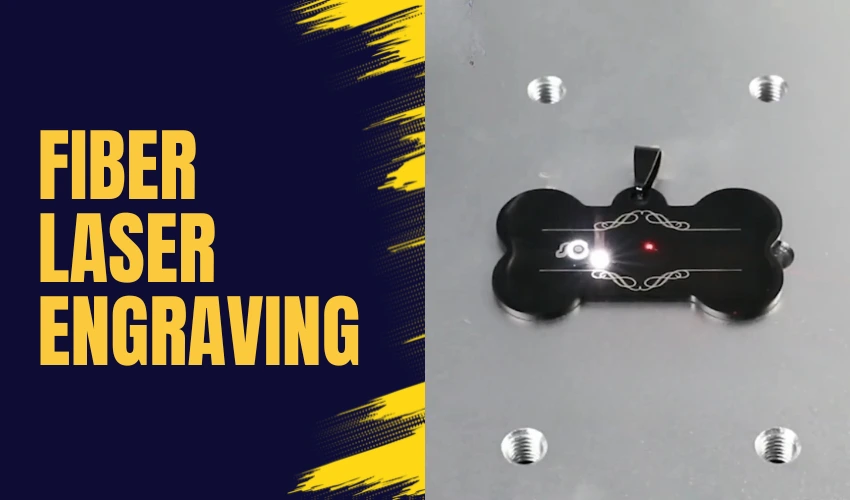
The result? Crisp, permanent engravings that resist wear, heat, and corrosion.
Materials Suitable For Fiber Laser Engraving
Fiber laser engravers excel with metals and high-performance plastics. Common materials include:
Material | Engraving Quality | Common Use Cases |
|---|---|---|
Stainless Steel | Excellent – produces dark, permanent, high-contrast marks without coating | Industrial tags, medical instruments, cutlery, jewelry, machine parts |
Aluminum | Excellent – clear white or black markings, depending on power settings | Nameplates, phone cases, automotive parts, aerospace components |
Brass | Excellent – high precision, creates deep and shiny engravings | Custom signs, jewelry, musical instruments, hardware |
Copper | Good – reflective surface requires optimized settings | Electrical components, heat sinks, coins, luxury goods |
Gold | Excellent – fine detail, non-contact engraving preserves material | Jewelry, watches, custom gifts |
Silver | Excellent – detailed and precise, maintains surface finish | Jewelry, silverware, commemorative coins |
Titanium | Excellent – strong contrast and oxidation color effects possible | Medical tools, aerospace components, ID tags |
Carbide | Excellent – durable, precise, and permanent | Industrial cutting tools, drills, dies |
Tungsten | Excellent – clean, permanent markings | Aerospace tools, electrical contacts |
Anodized Aluminum | Excellent – sharp, high-contrast white engravings | Promotional products, nameplates, identification tags |
Chrome-Plated Metals | Good – can remove or mark surface coating | Tools, auto parts, luxury décor |
Carbon Steel | Excellent – deep engraving and high contrast | Industrial parts, tools, machinery labels |
Tool Steel | Excellent – durable and precise engravings | Manufacturing tools, molds, dies |
Nickel | Good – produces visible, permanent marks | Electronics, aerospace components |
Platinum | Excellent – highly detailed, perfect for fine work | Jewelry, watchmaking, medical equipment |
Magnesium | Good – clear engraving with correct settings | Automotive parts, aerospace applications |
Ceramics (Coated or Marked) | Limited – requires coating or additive for visibility | Identification tags, electronics housing |
Painted Metals | Excellent – removes paint cleanly for contrast marking | Signs, control panels, promotional items |
Plastics Suitable for Fiber Laser Engraving
While fiber lasers are best for metals, they can mark certain plastics effectively — especially engineering-grade or additive-treated plastics that react to the laser’s wavelength (1064 nm).
Here’s a breakdown
Plastic Type | Laser Marking Quality | Typical Marking Effect | Common Applications |
|---|---|---|---|
ABS (Acrylonitrile Butadiene Styrene) | Excellent | High-contrast white or dark marks | Keyboards, automotive panels, electronics housings |
Polycarbonate (PC) | Excellent | Smooth, high-contrast marks | Nameplates, electrical components, device labels |
Polyamide (PA / Nylon) | Very Good | Crisp, readable text and barcodes | Cable ties, gears, industrial parts |
PBT (Polybutylene Terephthalate) | Very Good | Light to dark contrast depending on color | Connectors, switches, electronics |
Polyethylene (PE) | Good | Slight surface marking; low contrast | Packaging, pipes, containers |
Polypropylene (PP) | Good | Shallow, light-colored marks | Medical components, packaging, consumer products |
Acrylic (PMMA) | Limited | Frosted surface effect, not ideal for deep marking | Signage, light diffusers |
POM (Acetal / Delrin) | Excellent | Deep, clear black or white marks | Engineering parts, gears, bearings |
PVC (Polyvinyl Chloride) | Limited / Not Recommended | Melts or discolors easily due to chlorine content | Avoid – toxic fumes |
PET (Polyethylene Terephthalate) | Moderate | Light surface marking possible | Bottles, packaging, ID tags |
Teflon (PTFE) | Poor | Low absorption, difficult to mark | Not suitable without additives |
Blended or Laser-Additive Plastics | Excellent | Designed for high contrast marking | Automotive components, branded products, safety labels |
Key Takeaways:
- Fiber lasers excel at engraving metals, especially stainless steel, aluminum, brass, and titanium.
- They offer high precision, permanent markings, and no consumables required.
- While fiber lasers can mark certain plastics and coated materials, they are not suitable for wood, glass, or clear acrylic — those require a CO₂ laser instead.
- Ideal for industrial, commercial, and jewelry engraving applications.
What Can A Fiber Laser Engraver Do?
Fiber laser engravers are well-known for their ability to mark a variety of materials, from metals to industrial plastics, fast and easily. With high-grade industrial fiber laser markers, you may create serial numbers, bar codes, 2D Data Matrix, artwork, and personalization.
A fiber laser has a variety of applications. In fact, most people who buy fiber laser engravers buy them with one use in mind but then eventually branch out into different applications.

Applications of Fiber Laser Engraving
- Manufacturing: Used for marking parts with serial numbers, barcodes, and logos for traceability and branding.
- Jewelry: Engraving intricate designs, names, and dates on rings, bracelets, and other jewelry items.
- Electronics: Marking circuit boards, electronic components, and devices with identification codes and branding.
- Medical Devices: Creating precise markings on surgical instruments and medical implants.
- Automotive: Marking parts and components with detailed information for identification and quality control.
- Gifts and Personalization: Customizing items like trophies, plaques, and personalized gifts with unique engravings.
Let’s have a look at some of the most popular applications in more detail:
- Serializing and barcoding
Engraving barcodes and serial numbers directly onto tools and parts is one of the common uses for fiber lasers. Fiber lasers provide high-quality marks which can be read by a barcode scanner. You can use a variety of code structures for serializing including UPC codes, one-dimensional codes, and data matrix codes.
When serializing several parts, you can use the laser engraver with a jig for holding the various parts on the laser bed and then simultaneously serializing them. This eliminates the need for a dedicated operator for switching out of parts.
- Placing logos on products
If you have a company that is producing high-end products, etching your company logo can help ensure your brand will always be visible to the customer. Laser-engraved logos are better than printed labels because the labels can be removed voluntarily and involuntarily by the customer.
- Making custom products
Customizing products is another popular use for fiber laser engravers. You can run a very successful business as a laser engraver specializing in custom items. On the industrial level, you can help companies and startups to engrave their logos on their products. Alternatively, you can offer to engrave custom products like wall hangings, jewelry, watches, etc.
Types of Fiber Laser Engraving: Explained
Fiber laser engraving isn’t a one-size-fits-all process.
Different engraving techniques are used depending on the material, depth, and visual effect you want to achieve.
Here are the main types
Type of Fiber Laser Engraving | Description | Best For | Typical Applications |
|---|---|---|---|
1. Surface (Shallow) Engraving | The laser lightly removes the top layer of material to create visible marks without deep etching. | Metals and coated materials | Serial numbers, barcodes, logos, fine text |
2. Deep Engraving | The laser removes more material through multiple passes to create deep, tactile engravings. | Hard metals like stainless steel, brass, titanium | Mold making, tools, mechanical parts |
3. Black Annealing (Color Change Engraving) | The laser heats the surface without removing material, creating oxidation that turns the metal black. | Stainless steel, titanium | Medical instruments, luxury goods, jewelry |
4. Color (Oxidation) Engraving | By adjusting frequency and power, the laser creates different oxide layers that produce vibrant colors. | Stainless steel, titanium | Custom jewelry, branding, decorative work |
5. Foaming (Raised Engraving) | The laser melts the surface slightly to form a raised, frothy mark with contrast. | Certain plastics | Electronics casings, consumer goods |
6. Ablation (Coating Removal) | The laser removes paint, anodization, or coating to reveal the base material. | Coated metals, painted plastics | Automotive parts, promotional items, data plates |
7. 3D (Relief) Engraving | The laser engraves at varying depths to form a 3D relief effect. | Metals and some plastics | Art pieces, molds, luxury engravings |
8. Annealed White Marking | Controlled heating produces a light or white contrast mark on dark metals. | Black anodized aluminum, dark steel | Aesthetic markings, brand logos |
How Does A Fiber Laser Engraver Work?
Fiber laser engravers are advanced tools used to etch precise, high-quality designs onto various materials, including metals, plastics, and ceramics. Their speed, precision, and versatility make them popular in industries such as manufacturing, jewelry, and electronics.
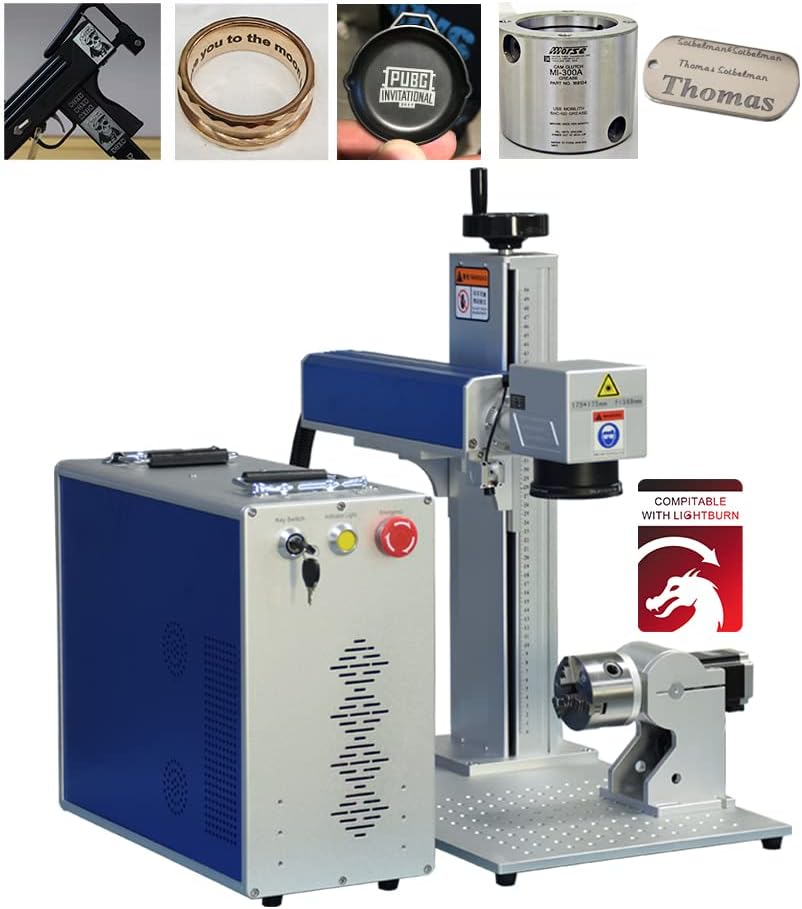
Components of a Fiber Laser Engraver
- Laser Source: The heart of the fiber laser engraver is the laser source, which generates the laser beam. This source typically uses a fiber optic cable doped with rare earth elements like ytterbium.
- Pump Diode: This component supplies the energy needed to excite the rare earth elements in the fiber, causing them to emit photons and create the laser beam.
- Optical Fiber: A flexible, thin fiber that guides the laser beam from the source to the focusing lens. It provides high beam quality and energy efficiency.
- Focusing Lens: This lens concentrates the laser beam to a fine point, allowing for precise engraving.
- Galvanometer Scanner: A system of mirrors controlled by a computer that directs the laser beam over the material’s surface according to the design.
- Cooling System: Keeps the laser engraver at optimal operating temperature, preventing overheating and maintaining performance.
- Control System: A computer or dedicated controller that manages the operation of the engraver, including the design input, laser power, speed, and other parameters.
How Fiber Laser Engraving Works
- Design Input: The process begins with a digital design created using graphic design software such as Adobe Illustrator, CorelDRAW, or CAD programs. The design is then converted into a format that the laser engraver can interpret, typically a vector file or a raster image.
- Beam Generation: When the engraver is activated, the pump diode energizes the rare earth elements in the optical fiber. This excitation causes the elements to emit photons, which are then amplified as they travel through the fiber, creating a coherent laser beam.
- Beam Delivery: The laser beam travels through the optical fiber to the focusing lens. The flexibility and precision of the fiber allow for efficient and accurate delivery of the beam to the work area.
- Focusing: The focusing lens concentrates the laser beam to a very fine point, typically a few micrometers in diameter. This focused beam has high energy density, which is crucial for engraving.
- Engraving: The galvanometer scanner, controlled by the computer, directs the focused laser beam across the surface of the material according to the design. The high energy of the laser beam interacts with the material, vaporizing or ablating it to create the engraved pattern.
- Cooling and Monitoring: Throughout the process, the cooling system ensures that the laser engraver maintains a stable temperature, preventing damage to the components and ensuring consistent performance. The control system monitors the process, making real-time adjustments as necessary to achieve the desired result.
Benefits of Fiber Laser Engraving
Fiber laser engraving offers several advantages over traditional engraving and other laser types:
- Unmatched Precision: Ideal for intricate designs, small text, and high-resolution logos.
- Permanent Marks: Resistant to fading, chemicals, and abrasion.
- Fast Processing Speed: High beam efficiency means quick production times.
- Low Maintenance: Fiber lasers have a long lifespan (up to 100,000 hours).
- Versatility: Works on a wide range of metals and engineered plastics.
- No Consumables: No need for inks, chemicals, or bit replacements.
Fiber Laser Engraving vs. CO₂ and Diode Lasers
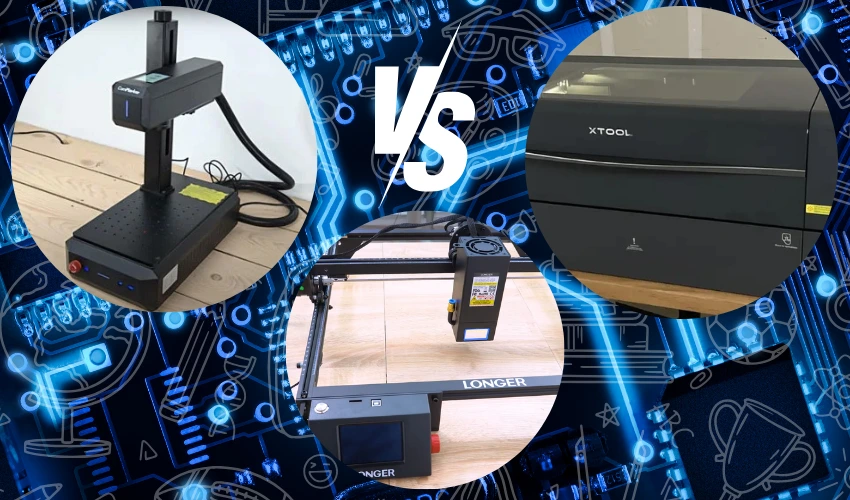
When choosing a laser engraver, understanding how fiber, CO₂, and diode lasers differ is crucial.
Each uses a different wavelength, making them suitable for specific materials and engraving styles.
Let’s break down their strengths, limitations, and best use cases.
Comparison Table: Fiber Laser Engraving vs. CO₂ vs. Diode Lasers
Feature | Fiber Laser | CO₂ Laser | Diode Laser |
|---|---|---|---|
Wavelength | 1064 nm | 10,600 nm | 450–455 nm |
Best For | Metals & some plastics | Wood, acrylic, leather, glass, fabric | Wood, leather, coated metal, dark acrylic |
Can Engrave Metals? | Yes (directly) | Only coated or painted metals | Only anodized or coated metals |
Marking Speed | Very Fast | Moderate | Moderate |
Precision / Detail | Extremely High | Very Good | Good |
Color Engraving | Yes (MOPA Fiber) | No | No |
Maintenance Needs | Very Low | Moderate | Low |
Machine Size | Compact | Larger desktop or floor unit | Compact / Portable |
Typical Lifespan | ~100,000 hours | ~10,000–20,000 hours | ~20,000–50,000 hours |
Best Users | Metalworkers, manufacturers, jewelers | Crafters, makers, small shops | Hobbyists, beginners, small studios |
Fiber Laser Engraving

Fiber lasers use fiber-optic technology to deliver a concentrated 1064 nm beam, perfect for metal marking and engraving.
They create high-contrast, permanent marks without damaging the surface.
Best For:
- Stainless steel, aluminum, brass, titanium
- Industrial parts, tools, and jewelry
- Color marking (with MOPA Fiber Lasers)
Pros: Fast, precise, and maintenance-free
Cons: Not suitable for wood or glass
CO₂ Laser
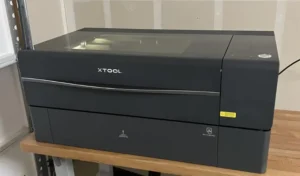
CO₂ lasers emit a 10,600 nm infrared wavelength, ideal for organic materials like wood, leather, fabric, and acrylic.
They’re the most versatile option for crafters and small businesses.
Best For:
- Wood, acrylic, leather, glass, fabric
- Signs, home décor, textile work
Pros: Cuts and engraves a wide range of materials
Cons: Cannot engrave bare metal without coating; higher maintenance
Diode Laser
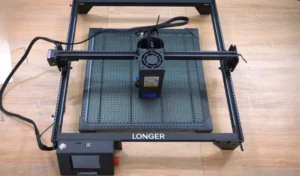
Diode lasers are compact, affordable, and use a 450 nm blue light.
They’re great for hobbyists working with wood, leather, and coated metals.
Best For:
- Wood, leather, coated metal, dark acrylic
- Beginners and small creative projects
Pros: Budget-friendly, portable, and beginner-safe
Cons: Limited cutting power, not for raw metals or clear materials
Quick Summary
Laser Type | Best For | Not Suitable For |
|---|---|---|
Fiber | Metals, plastics, industrial marking | Wood, glass, transparent acrylic |
CO₂ | Wood, acrylic, leather, fabric | Bare metals |
Diode | Wood, leather, coated metals | Transparent or light-colored materials |
Which One Should You Choose?
- Choose a Fiber Laser → if you mainly engrave metals and want professional, durable results.
- Choose a CO₂ Laser → if you cut and engrave non-metal materials like wood and acrylic.
- Choose a Diode Laser → if you’re a beginner or hobbyist working on smaller wood or leather projects.
Fiber Laser Engraving vs MOPA Fiber Laser Engraving: Key Differences Explained
Both standard fiber lasers and MOPA (Master Oscillator Power Amplifier) fiber lasers use fiber-optic technology and a 1064 nm wavelength to engrave metals and certain plastics.
However, their pulse control and engraving flexibility set them apart.
Comparison Table: Fiber Laser vs MOPA Fiber Laser
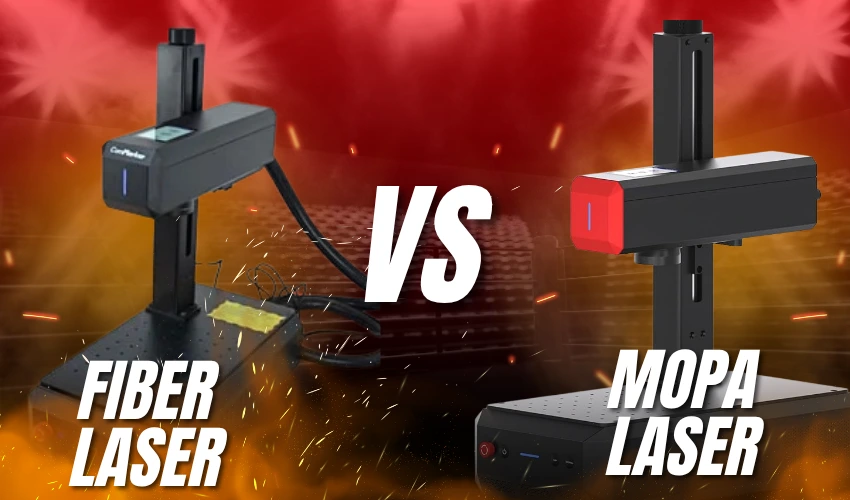
Feature | Standard Fiber Laser | MOPA Fiber Laser |
|---|---|---|
Technology | Fixed pulse duration | Adjustable pulse duration (Master Oscillator + Power Amplifier) |
Pulse Width Range | 100 ns (fixed) | 2 ns – 500 ns (fully adjustable) |
Color Engraving on Metal | Not possible | Yes — full-color marking on stainless steel and titanium |
Marking on Plastics | Limited (burns or melts easily) | Excellent — precise, high-contrast marks on most plastics |
Surface Finish | Slightly rougher, deeper marks | Smooth, controlled surface with fine texture options |
Speed | Very fast for simple deep marks | Slightly slower, but more versatile for detailed work |
Versatility | Ideal for deep, industrial engraving | Ideal for artistic, high-precision, and multi-material work |
Typical Lifespan | 100,000 hours | 100,000 hours (same, but higher control) |
Price Range (Approx.) | Lower cost | Higher cost |
Best For | Deep metal engraving, barcodes, serial numbers | Color engraving, plastics, fine texturing, premium marking |
When to Choose a Standard Fiber Laser
A standard fiber laser is the better option if:
- You mainly engrave or mark metals (stainless steel, aluminum, brass, etc.)
- You prioritize speed and depth over surface finish
- You want an affordable, industrial-grade engraving solution
Best For: Metal part identification, barcodes, and deep industrial marks
When to Choose a MOPA Fiber Laser
A MOPA fiber laser is ideal if:
- You need color engraving on stainless steel or titanium
- You work with delicate plastics that require pulse-width control
- You want versatility for multiple materials and applications
Best For: Branding, jewelry, color logos, precision texturing, and mixed-material marking
Quick Summary
- MOPA = More control, color, and versatility.
- Standard Fiber = More speed and depth at lower cost.
If you want industrial durability — go with standard fiber.
If you want creative flexibility and color — choose MOPA fiber.
How Much Does a Fiber Laser Engraving Machine Cost?
The cost of a fiber laser engraving machine can vary widely depending on the brand, power, and features. High-end industrial systems can cost anywhere from $10,000 to over $20,000. While cheaper fiber laser machines exist online, many of these low-cost options suffer from poor build quality, weak laser output, or unreliable components, making them a risky investment.
Finding a high-quality fiber laser engraver at an affordable price can be challenging, especially for small businesses, crafters, and hobbyists who can’t justify spending $10,000 or more on a professional-grade system.
That’s where Laser Engraving Tips steps in — reviewing and recommending reliable, high-performance fiber laser machines that balance power, precision, and affordability.
Frequently Asked Questions
What materials can be engraved with a fiber laser?
Fiber lasers are designed primarily for metals and some plastics. Common materials include stainless steel, aluminum, brass, copper, titanium, gold, silver, and anodized aluminum. They can also mark certain engineering plastics like ABS or polycarbonate. However, fiber lasers are not suitable for wood, glass, or clear acrylic, which require CO₂ or UV lasers instead.
What is the difference between fiber laser marking and engraving?
The difference lies in depth and permanence.
Laser marking alters the surface color or texture without removing much material — ideal for serial numbers, barcodes, and logos.
Laser engraving, on the other hand, removes material to create a deeper, more durable mark, often used for industrial parts, jewelry, or tools.
Can a fiber laser engrave color?
Yes — but only MOPA fiber lasers can produce color engravings. They do this by adjusting pulse frequency and duration, which changes how light interacts with metal surfaces. This allows the creation of vibrant hues (like blue, gold, purple, and green) on stainless steel or titanium. Standard fiber lasers, however, can only produce black, gray, or white markings.
How deep can a fiber laser engrave metal?
Depth depends on the laser power, material type, and number of passes.
Typically, a 20W fiber laser can engrave up to 0.1–0.3 mm deep, while a 50W or 100W model can reach depths of up to 1.5 mm or more. For industrial deep engraving, higher wattage and multiple passes are recommended.
Do fiber laser engravings wear off over time?
No — fiber laser engravings are permanent. Since the laser physically alters or removes material, the result is resistant to fading, corrosion, and abrasion. This durability makes fiber engraving ideal for tools, machine parts, firearms, and jewelry that experience regular use or harsh conditions.
Conclusion: Is Fiber Laser Engraving Worth It?
Absolutely.
If you work with metals or high-performance plastics, a fiber laser engraver delivers unbeatable precision, permanence, and speed. Whether you’re a business owner, jewelry designer, or hobbyist, investing in a fiber laser opens up endless creative and professional possibilities.
